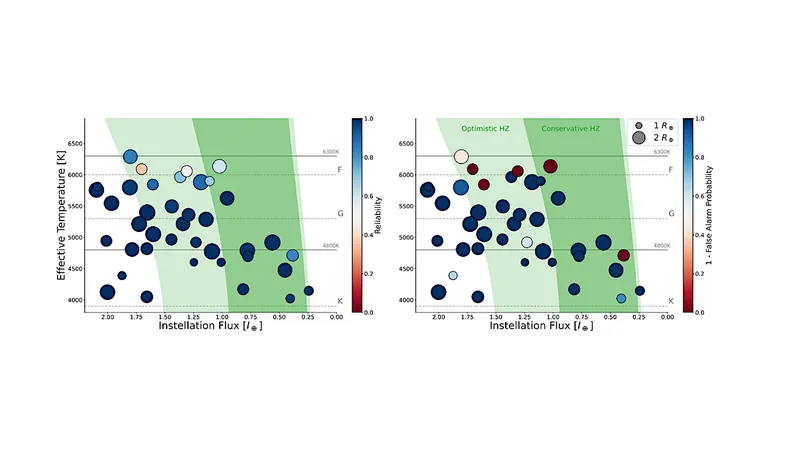
Shocking New Insights into Kepler's Habitable Zone: Are There Really Earth-like Worlds Out There?
2025-09-10
Author: Wei Ling
The Kepler space telescope has revolutionized our understanding of the universe, primarily aiming to discover Earth-like planets nestled in the habitable zones of Sun-like stars. But are these planets really as abundant as we hope?
Unfortunately, many of these potential Earth analogs hover at the edge of detection limits. This makes it critical to accurately estimate their statistical significance, particularly through the lens of false alarm probability (FAP). This metric is crucial, as it greatly influences the perceived occurrence rate of these planets, a key factor for future missions that will search for signs of life.
Historically, researchers have relied on light curve inverting or scrambling methods to estimate FAP, but these approaches have proven to be unsatisfactory. In a groundbreaking new study, scientists suggest a novel modification: altering the planet transit template by randomly shifting the transit times slightly.
This innovative technique, known as the Null Signal Template (NST), replicates the same statistical properties as the traditional periodic template. This enhancement allows astronomers to assign star-specific FAPs to every candidate exoplanet more reliably. The results of simulations and real data indicate that this method remains robust even under the influence of unmodeled noise.
With this new approach, researchers have re-evaluated 47 previously proposed habitable Earth-like and super-Earth candidates from the Kepler data. Astonishingly, they identified 29 candidates boasting a FAP below 1%, with 7 of these not yet deemed confirmed.
Among the notable candidates are the intriguing Kepler 452b, which has a radius impressively pegged at 1.5 times that of Earth with an orbit extending 384 days, and KOI 2194.03, which boasts a radius of 1.8 Earth radii and a period of 445 days. Both orbit Sun-like G stars, raising hopes for potential habitability.
However, the study does cast shadows on several well-known candidates. For instance, Kepler 186f, previously celebrated, now holds a concerning FAP of 20%, qualifying it as a marginal or likely false alarm.
This fresh analysis prompts a thrilling reexamination of our cosmic neighborhood. With more precise methods in hand, the dream of discovering life-friendly worlds may inch closer to reality than ever before.



 Brasil (PT)
Brasil (PT)
 Canada (EN)
Canada (EN)
 Chile (ES)
Chile (ES)
 Česko (CS)
Česko (CS)
 대한민국 (KO)
대한민국 (KO)
 España (ES)
España (ES)
 France (FR)
France (FR)
 Hong Kong (EN)
Hong Kong (EN)
 Italia (IT)
Italia (IT)
 日本 (JA)
日本 (JA)
 Magyarország (HU)
Magyarország (HU)
 Norge (NO)
Norge (NO)
 Polska (PL)
Polska (PL)
 Schweiz (DE)
Schweiz (DE)
 Singapore (EN)
Singapore (EN)
 Sverige (SV)
Sverige (SV)
 Suomi (FI)
Suomi (FI)
 Türkiye (TR)
Türkiye (TR)
 الإمارات العربية المتحدة (AR)
الإمارات العربية المتحدة (AR)